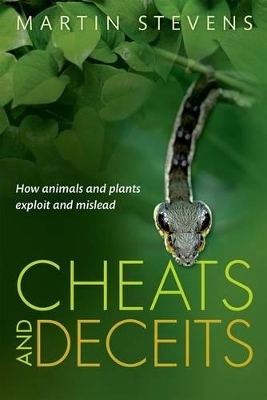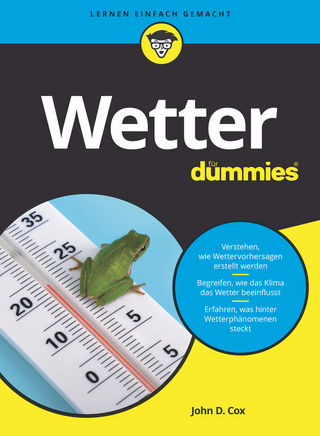
Cheats and Deceits
Oxford University Press (Verlag)
978-0-19-870789-9 (ISBN)
In nature, trickery and deception are widespread. Animals and plants mimic other objects or species in the environment for protection, trick other species into rearing their young, lure prey to their death, and deceive potential mates for reproduction. Cuckoos lay eggs carefully matched to their host's own clutch. Harmless butterflies mimic the wing patterning of a poisonous butterfly to avoid being eaten. The deep-sea angler fish hangs a glowing, fleshy lure in front of its mouth to draw the attention of potential prey, while some male fish alter their appearance to look like females in order to sneak past rivals in mating. Some orchids develop the smell of female insects in order to attract pollinators, while carnivorous plants lure insects to their death with colourful displays.
In this book, Martin Stevens describes the remarkable range of such adaptations in nature, and considers how they have evolved, and become increasingly perfected as part of an arms race between predator and prey or host and parasite. He explores the work of naturalists and biologists from Alfred Russel Wallace to current research, showing how scientists find ways of testing the impact of particular behaviours and colourings on the animals it is meant to fool, as opposed to our human perceptions. Drawing on a wide range of examples, Stevens considers what deception tells us about the process of evolution and adaptation.
Martin Stevens is Associate Professor of Sensory and Evolutionary Ecology based in the Centre for Ecology and Conservation, University of Exeter. His research focuses on sensory ecology and behaviour, especially animal coloration and vision. He studies a wide range of animals, including fish, reptiles, birds, insects, crabs, and primates. Martin's work has frequently covered topics related to deception, including mimicry by brood parasites and anti-predator coloration, including camouflage, eyespots, and mimicry. He undertook his PhD at the University of Bristol on animal camouflage and bird vision, before spending seven years as a research fellow in the Department of Zoology at the University of Cambridge. He moved to Exeter University in early 2013. Martin has published over 70 scientific manuscripts, in addition to two textbooks, including a recent one on sensory ecology and behaviour. His research is frequently covered in the media.
1. The Basis of Deception in Nature ; 2. Thieves and Liars ; 3. Lured into an Early Grave ; 4. Disruption and Dazzle ; 5. A Spider in Ant's Clothing ; 6. Bluff and Surprise ; 7. An Imposter in the Nest ; 8. Spreading Genes and Sexual Mimicry ; 9. The Future of Deception ; Notes & References ; Further Reading ; Index
| Zusatzinfo | 69 colour figures |
|---|---|
| Verlagsort | Oxford |
| Sprache | englisch |
| Maße | 167 x 240 mm |
| Gewicht | 680 g |
| Themenwelt | Sachbuch/Ratgeber ► Natur / Technik ► Natur / Ökologie |
| Naturwissenschaften ► Biologie ► Zoologie | |
| ISBN-10 | 0-19-870789-4 / 0198707894 |
| ISBN-13 | 978-0-19-870789-9 / 9780198707899 |
| Zustand | Neuware |
| Haben Sie eine Frage zum Produkt? |
aus dem Bereich


